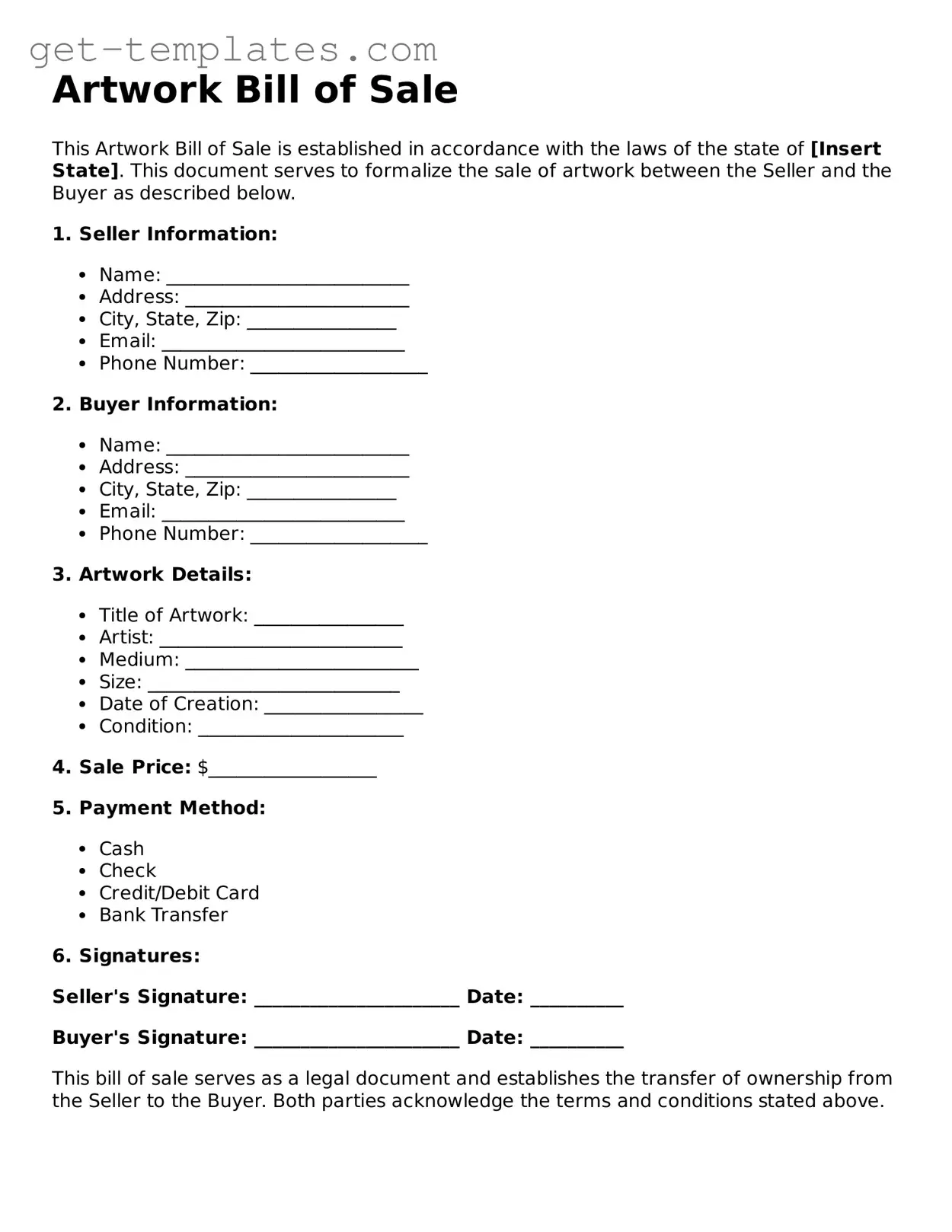What is an Artwork Bill of Sale?
An Artwork Bill of Sale is a legal document that transfers ownership of a piece of artwork from one party to another. It serves as proof of the sale and outlines important details about the transaction, including the artwork's description, the sale price, and the names of both the buyer and seller.
Why do I need an Artwork Bill of Sale?
This document is crucial for several reasons:
-
It provides legal protection for both the buyer and the seller.
-
It helps establish the provenance of the artwork, which can be important for future resale.
-
It serves as a record of the transaction for tax purposes.
The Artwork Bill of Sale should include the following details:
-
The names and contact information of both the buyer and seller.
-
A detailed description of the artwork, including the title, artist, medium, size, and any unique identifiers.
-
The sale price and payment method.
-
The date of the transaction.
-
Any warranties or representations made by the seller regarding the artwork.
Is it necessary to have the Artwork Bill of Sale notarized?
While notarization is not legally required, it is highly recommended. Having the document notarized adds an extra layer of authenticity and can help prevent disputes in the future. It also makes the document more credible if legal issues arise.
Can I use a generic Bill of Sale for artwork?
Using a generic Bill of Sale is possible, but it may not cover all the specific details related to artwork transactions. A dedicated Artwork Bill of Sale is tailored to address unique aspects of art sales, ensuring that both parties are adequately protected.
What if I lose my Artwork Bill of Sale?
In the event of losing the document, it is advisable to create a duplicate as soon as possible. If you have a digital copy or any correspondence related to the sale, these can help substantiate your ownership. If necessary, consult with a legal professional to explore your options.
Can I sell artwork that I do not own?
Legally, you cannot sell artwork that you do not own or do not have the right to sell. Doing so can lead to serious legal consequences. Always ensure that you have clear ownership or permission from the rightful owner before proceeding with a sale.
What happens if there is a dispute after the sale?
If a dispute arises after the sale, the Artwork Bill of Sale serves as a key piece of evidence. It outlines the terms agreed upon by both parties. If the issue cannot be resolved amicably, it may be necessary to seek legal advice or mediation to address the matter.
How can I ensure a smooth transaction?
To ensure a smooth transaction, consider the following steps:
-
Clearly communicate all terms and conditions before finalizing the sale.
-
Complete the Artwork Bill of Sale in full and ensure both parties sign it.
-
Keep copies of all documents related to the sale.
-
Consider using a trusted intermediary or legal professional if the transaction involves significant value.
